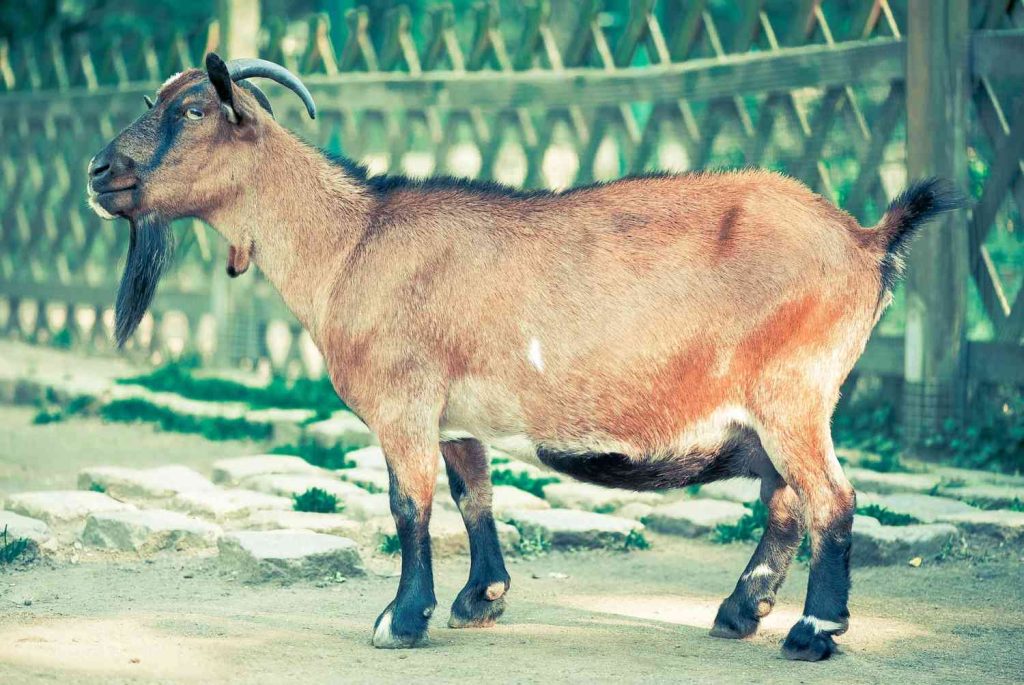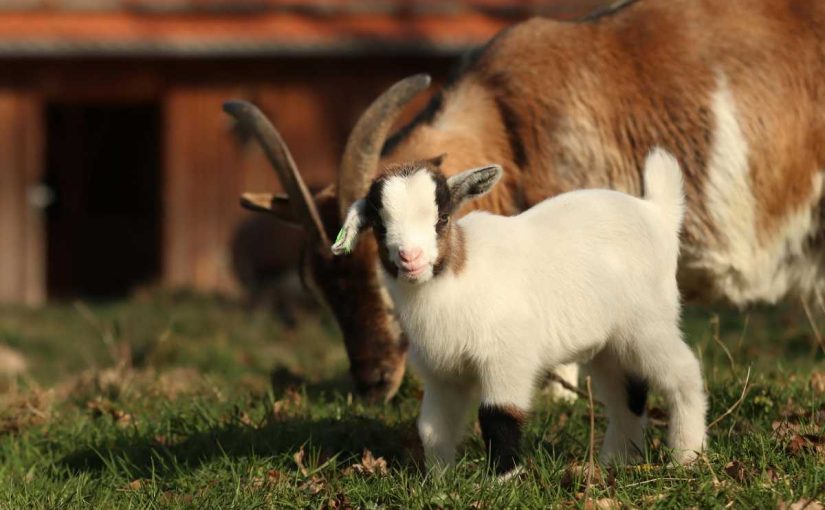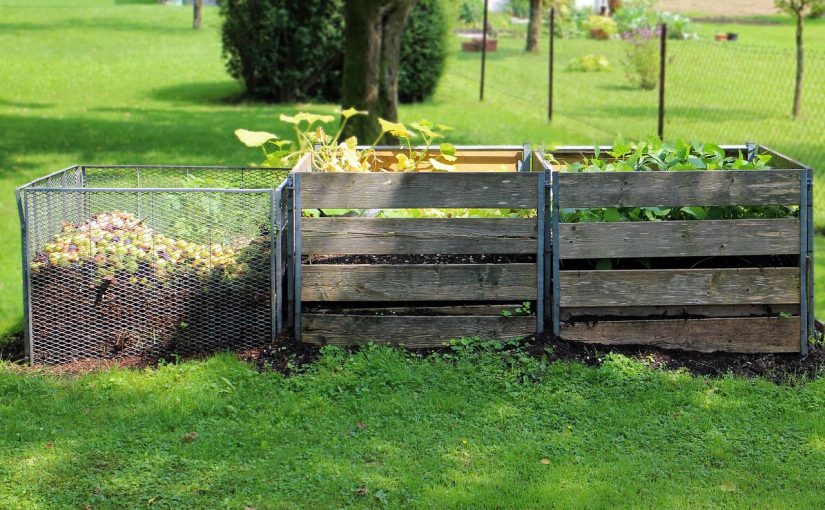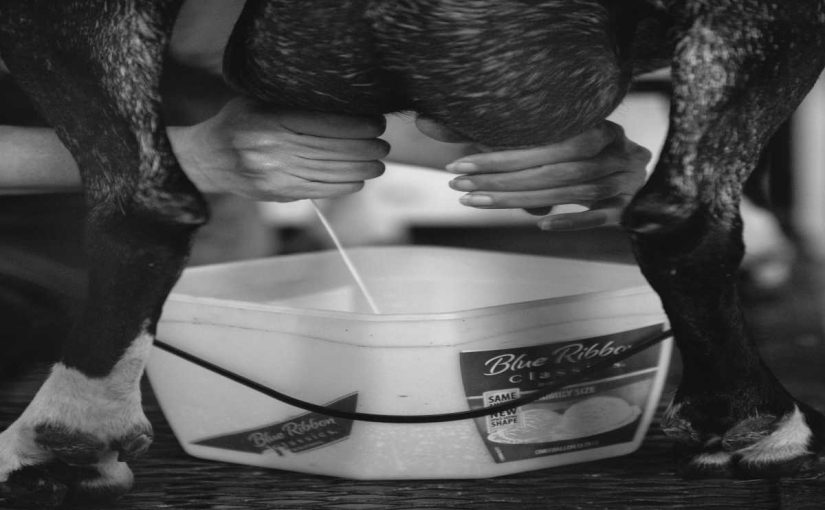The global population of goats continues to expand, now approaching one billion. The number of goats raised mainly for milk production is also increasing as demand grows. Much of the world’s dairy goat output and use are in Asia.
Still, a global perspective of the dairy goat industry provides valuable lessons to develop productive modern dairy goat industries. Europe, particularly France, considers the most regulated market for goat milk.
The Extent Of Goat Farming Worldwide

The European goat sector specializes in milk processing, mainly for commercial cheesemaking, though maintaining conventional on-farm growth. State participation is essential in governing, investigating, developing, funding local supplier associations and markets, and maintaining health and efficiency. Nonetheless, manufacturers often face demand volatility.
Also read: Sheep Farming – A Step to Step Guide
Modern dairy goat industries prove goat farming profitable
Advanced dairy goat industries are emerging in countries with no long goat milk tradition like China, the U.S., and New Zealand due to increasing market demand, high prices, and climate change. The strategy, management, and consumer mix vary greatly.
Still, irrespective of region, the dairy goat sector thrives when farmers have exposure to markets and tools and expertise to manage their livestock and natural resources sustainably.
Those are accomplished more readily by robust, equitable producer associations, access to professional support, and policies that allow vulnerable and disadvantaged communities to profit from through demand.
Evidence of why goat farming is profitable!
The global dairy-goat industry is increasingly growing. Besides safe and nutritious milk-based products provide sustainable livelihoods, particularly in resource-limited areas, and help smallholders to accumulate assets.
Well-managed goats may also support the ecosystem by weed management, fire protection, habitat conservation, and climate change mitigation. It is mainly attributed to their collection and feeding behaviors. In addition to milk, dairy goats have other incentives for owners, including leather hides, meat animals, and fertilizer manure. They can create income sources while grazing under trees on oil palm plantations.
Goat farming for meat
Goats that are farmed for meat processing comprise the bulk of the world population. In developed parts of the world, goats are generally considered as a specialty or exotic livestock. In contrast, in developing countries, particularly in South-East Asia and Africa, goats are the primary source of meat production (Dhanda et al. 2003).
South Africa’s Boer Goat is the only recognized breed chosen for meat processing. Other types include Anglo-Nubian (dual-purpose animals), Kiko of New Zealand, Damascus, and Spanish. There are various crosses between Boer bucks and dairy goats. Many local breeds have meat characteristics in different areas of the world.
Why would people buy goat meat and milk?
The answer to this question will be the answer to your question about why to do goat farming? People will buy goat’s milk as it is a good source of nutrition and has several health benefits. It is due to these health benefits goat farming for milk is a lucrative business.
It was provided that it was eaten in adequate quantities. It has comparable protein, lower fat, higher calcium, magnesium, potassium, identical iron, and lower B12 and folate content. On the other side, goat meat produces weak saturated fatty acids and cholesterol and is a safer option to other red meat forms. Therefore, goat farming for meat is a good idea.
Leather production from goat
Goatskin leather is used for soft hide pockets, hats, gloves, and other items. Traditionally, leather bookbinding was favored. Untanned goat skins are used as containers for beer, kefir, food, etc. High-quality goat skins from Bangladesh Black Bengal breed.
Advantages of goat farming for milk and meat
- The initial investment in goat farming is significantly less than dairy farming.
- You can even start goat farming with one goat and then gradually increase to a herd.
- Goats will, in no small degree, bear bitter tastes compared to other species. They also eat nearly all kinds of plants that other species do not consume.
- Mutton and goat meat are much in demand, and there is also no religious, social taboo about it. It produces lean beef and has less cholesterol.
- The small fat globules in the goat’s milk make it easily digestible.
- It’s dropping a vast amount of nitrogen, potassium, and phosphorus.
- You start to get milk’s goat as soon as they grow 15 to 17 months older.
Goat Breeds
If you are still searching for the answer to your question, “Is goat farming profitable?” read this and get the right answer.
1. Fainting Goat
The Fainting Goat is a domestic goat breed. It also has other names, including Myotonic Cup, Tennessee Fainting, Tennessee Meat, Anxious, Rigid, Texas Wooden Leg, Rigid Beet, and Scare Cups. A race trait known as myotonia congenita is referred to under the term “Fainting,” a condition in which the muscle cells are prolonged when the goat is shocked. The exact origin of this breed of goats is unknown.
Characteristics of fainting goat
Fainting goat is smaller than the standard breeds of goat. The most common colors are black and white in this breed, but most potential colors are also present in this species. The Fainting goats have wide, distinctive eyes on high bases. The hair can be either short or thick, with some people grow a lot of cashmere in colder months.
2. The British Alpine
The British Alpine Goat is a domestic goat breed mainly used for milking. It was produced by other breeds of Toggenburg goat in the early 1900s. The goat of Toggenburg has the same Swiss marks. The British alpine goat, native British goats, and Nubian goats were produced from the Toggenburg.
The breed is known for producing high-quality milk as well as prolonged lactations. The race was brought to Australia in 1958 and is spread throughout the world. Although maybe not as much as other milking goats like the Saanen horse.
Characteristics of British Alpine Goat
British Alpine Goat is a beautiful animal and looks pretty good. They typically have white Swiss markings in black paint. But at times, a black goat will appear, and the breed is sometimes referred to as ‘all black’ or ‘black Saanen goat.’
Although their slim black coat lights up because of the absence of copper in the diet (copper is one of the essential minerals for all goats, and its color may indicate its consumption of copper). The breed has a traditional ‘clover’ shape, typical in some other dairy goat breeds.
Like many other milk-based goats, British Alpine goats are often distributed. You have hair, ears upright, and a straight muzzle line. The perfect bucks height is 95 cm and 83 cm.
3. Arapawa Goat Characteristics & Breed Information
The Arapawa goat is a dual-purpose domestic goat raised for the production of meat and milk. Arapawa goat is simply a wild race of a local goat and one of the rare species of goat in the nation. The breed was found isolated in the Marlborough Sounds of New Zealand on the Island of Arapawa.
Characteristics of Arapawa Goat
Arapawa goat is a comparatively small breed of goat. It is smaller than modern dairy breeds. The goats of Arapawa come in different colors and patterns. Brown, black, fawn and white are typical colors and patterns.
Must Read: Dairy Farming
The race typically has distinct faces and several goats and bowl stripes. They have bright labels and black and brown patchwork.
4. Aspromonte Goat
The Aspromonte goat is a domestic goat raised for the production of meat and milk. It is also called Aspromonte or Capra dell’Aspromonte. The species is named after the Aspromonte mountain range in the province of Reggio Calabria, in southern Italy.
Aspromonte goat is only grown in Reggio Calabria, mostly in Aspromonte, on the plateau of Zomaro (Altipiano Dello Zomaro) in the north-east and on the province’s ionic coastlines, and in the Germanic areas in particular.
Characteristics of Aspromonte Goat
The goat Aspromonte is a medium-sized dual-purpose goat breed. Their head is tiny and their face is straight. They have horizontal or upright ears. Their abdomen is relatively broad, with a straight back and a sloping rump, for the size of the animal. The udders with medium size teats have been firmly attached.
Both bucks and bucks are barbed and have horns typically. The head and bucks’ antlers are more significant than the deer. The bucks have more muscular extremities and more robust fur. The Aspromonte goat’s coat is long with a ruddy cassava-like undercoat.
Their color varies. Red and white, black and white, blue, orange, orange, and gold are the most common colors. Aspromonte’s average height is about 69 cm and the bucks about 73 cm.
5. Appenzell Goat
The Appenzell Goat is a dairy goat breed raised primarily for the production of milk. The race comes from Switzerland’s Appenzell region. It was named after its place of origin. Some other names like French are given to Appenzell Goat. It is a relatively old breed of goats and has been recorded for more than 100 years. The Appenzell was founded in Innerrhoden in February 1902.
Characteristics of Appenzell Goat
The goats of Appenzell are medium-sized creatures. It is pure white with medium-length hair and a healthy, harmoniously formed body. Appenzell goats have connections with the Saanen goat, but their body is a little broader than those of Saanen goat and, therefore, significantly smaller.
What to consider making goat farming profitable
- Location: The best places for a goat farm are far from cities because urban congestion is bad for animal safety. As goats eat a lot of grass every day. You must also ensure that your food supply is very convenient and not too far from the breeding area.
- Land: Goats can be intensively grown on small acres with additional feed. If you use a comprehensive scheme, 2 to 8 goats per acre would be a rough guide for grass and brush supplies.
- Veterinarian: Simple access to a veterinarian is a significant factor. If you start a goat farm, your goats are likely to contract diseases. A veterinarian can, therefore, help reduce losses in disease control and management. They help you diagnose diseases or advise on supplements to keep your pets safe, particularly in stressful situations such as weaning.
- Transportation: A market close to the farmland is best, as it allows you to sell your commodities and buy the goods required simply.
- Care: Always try to care for your goats properly. Do not feed them with tainted food or water. Keep your home as tidy and safe as you can. You must frequently clean your room. Take extra care of the children and the pregnant. Keep the kids some weeks after their birth with their mother.
What to consider making goat farming profitable
- Location: The best places for a goat farm are far from cities because urban congestion is bad for animal safety. As goats eat a lot of grass every day. You must also ensure that your food supply is very convenient and not too far from the breeding area.
- Land: Goats can be intensively grown on small acres with additional feed. If you use a comprehensive scheme, 2 to 8 goats per acre would be a rough guide for grass and brush supplies.
- Veterinarian: Simple access to a veterinarian is a significant factor. If you start a goat farm, your goats are likely to contract diseases. A veterinarian can, therefore, help reduce losses in disease control and management. They help you diagnose diseases or advise on supplements to keep your pets safe, particularly in stressful situations such as weaning.
- Transportation: A market close to the farmland is best, as it allows you to sell your commodities and buy the goods required simply.
- Care: Always try to care for your goats properly. Do not feed them with tainted food or water. Keep your home as tidy and safe as you can. You must frequently clean your room. Take extra care of the children and the pregnant. Keep the kids some weeks after their birth with their mother.
Conclusion
That’s all about goat farming. So, whether you do goat farming for milk or meat, you can make it a profitable business.



